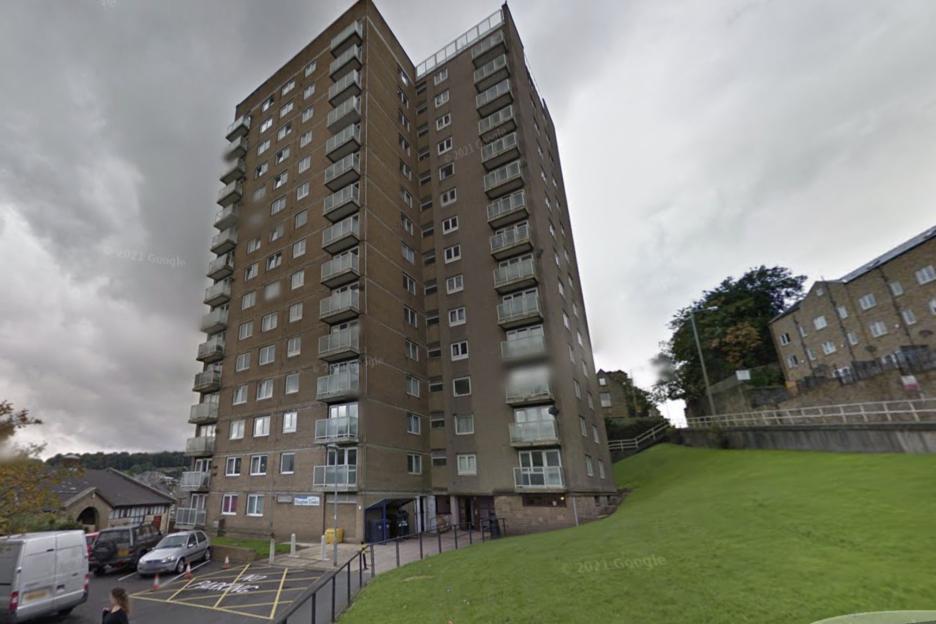BATTERED yet unbowed, the Tower of London became a symbol of resistance and fortitude as the Nazi Blitz raged.
Now this citadel â entwined for a millennium in the British national story â has been bedecked with 30,000 blood-red poppies as a stark and moving memorial to mark .
 Beefeater Andy Shedden at the poignant display in the Tower of London
Beefeater Andy Shedden at the poignant display in the Tower of London A worker installs the display
A worker installs the display Creator Paul Cummins suffered severe injuries when his hand was crushed in an industrial roller used to make the poppies
Creator Paul Cummins suffered severe injuries when his hand was crushed in an industrial roller used to make the poppiesStanding amid the ceramic blooms, Beefeater and ex serviceman Andy Shedden, 57, told me: “It’s poignant because the Tower community suffered during World War Two.
“That conflict is still in living memory so this poppy memorial is the right thing to do to honour so much sacrifice.”;
The yeoman warder who served with 3 Royal Horse Artillery gestures around the historic compound to where Luftwaffe bombs fell.
“The North Bastion was hit and so was the Old Hospital Block just over there,”; he explained.
The Tower â close to the East End docks and warehouses lining the Thames â was an obvious landmark for bombing crews when cloud cover was low.
On October 4, 1940, the massive stone North Bastion took a direct hit.
One of Andy’s predecessors, yeoman warder Samuel Reeves, 57, perished after being trapped under rubble.
Also killed in the aerial bombardment that night was Lily Frances Lunn, 70, who lived in the Tower complex with her family.
After another bombing raid on December 8 of that year, Chief Warder A H Cook said: “By dawn our poor old Tower looked in a pitiful plight, for hardly a portion of it had escaped the fury of the night.
“Most of its windows had been blown out or were hanging awry.
“Glass was strewn everywhere.
‘Display is attempt to say recovery is ahead’
“Doors were off their hinges, ceilings down, and blackout curtains torn to ribbons.”;
raged yet the iconic White Tower at the centre of the fortress â built by in 1078 â was miraculously never hit.
Bombs landed a few feet away, but the white stone edifice, where were perhaps murdered on orders in the 1480s, remained unblemished as a beacon of hope to Londoners.
Minette Butler, assistant curator at Historic Royal Palaces, said: “When you look at the number of bombs that landed here, it really is incredible the White Tower in particular wasn’t hit.”;
The new poppy display uses blooms from Blood Swept Lands And Seas Of Red â the art installation that filled moat with a sea of crimson in 2014.
The display used 888,246 ceramic flowers representing every UK fatality in the .
When you look at the number of bombs that landed here, it really is incredible the White Tower in particular wasn’t hit
Minette Butler
Artist Paul Cummins â who came up with the concept â lost his middle finger and the use of his index finger of his right hand after it was crushed in an industrial roller used to make the poppies.
The 47-year-old said: “I live with it and I move on. I believe the poppy project helped me get over doing what I did to my hand, because I didn’t have to think about it.”;
Timed to mark the centenary of the start of that conflict, it soon became a site of remembrance visited by more than five million people.
, and , and were among those who came to see the memorial.
After four months, most of the poppies were sold at £25 each to raise money for military charities, but thousands were taken on tour around the country and then kept at the Imperial War Museum.
Now they have returned to mark , with flowers forming a “wound”; where bombs really fell on the South Lawn at the fortress.
They then cascade from the White Tower â like blood flowing from a wound â before rippling through the castle complex and out into the Thames at Traitors’ Gate.
Close by, sleek-black in their aviary, are the Tower’s seven ravens who are being kept in pens while work on the installation was finished.
It is said that the kingdom and the Tower itself will fall if ravens ever leave the castle.
Walkways have been made between the red flowers so that the birds, including one called Poppy, can shuffle among them.
Tower Governor, Brigadier Andrew Jackson, 60, told me: “VE Day’s 80th is such a big anniversary.
“It’s one of the last occasions we’re going to be able to celebrate the greatest generation alongside those who were actually part of the war, whether on the home front or deployed overseas.”;
 The new poppy display uses blooms from Blood Swept Lands And Seas Of Red â the art installation that filled the Tower’s moat with a sea of crimson in 2014
The new poppy display uses blooms from Blood Swept Lands And Seas Of Red â the art installation that filled the Tower’s moat with a sea of crimson in 2014 Cindy Sheehan said: ‘Each poppy is individually made, which represents an individual loss of life to me. It’s a beautiful and very moving sight’
Cindy Sheehan said: ‘Each poppy is individually made, which represents an individual loss of life to me. It’s a beautiful and very moving sight’ The wrecked North Bastion after it was hit by a bomb in 1940
The wrecked North Bastion after it was hit by a bomb in 1940The and veteran, who served with the amalgamated Royal Yorkshire Regiment, said that the display was not just one of remembrance but also resilience.
Brigadier Jackson added: “The Tower of London has stood for a thousand years. It’s witnessed wars, plagues, floods and fire.
“And it was wounded itself during the Second World War. So the poppy display is attempting to say that although you can be wounded, there is recovery ahead of you.”;
At the outbreak of the war in 1939, â kept at â were secretly moved and hidden at .
While historic items from British history normally kept in the White Tower, including armour, were also taken to a safe location.
The now-vacant galleries were used by troops as a sports room and concert hall, with an air raid shelter in the basement.
The tower was also used to interrogate prisoners of war.
The most high-profile was , deputy Fuhrer of .
‘Doomed mission to negotiate peace’
In 1941 right-hand man piloted a from Germany to in what some believe was a doomed mission to negotiate peace with Britain.
He was held at King’s House at the Tower where many prisoners had been interrogated â including â before being transferred to a .
In August of that year, German spy became .
The agent had parachuted into a field in Ramsey, Cambs, in January 1941 but broke his ankle on landing.
Soon apprehended by the local Home Guard, he was found to be carrying £500, forged identity papers and a radio transmitter.
Found guilty of espionage, he was taken to the rifle range at the Tower where he was blindfolded and tied to a brown Windsor chair.
Following a silent signal from an officer, eight Scots Guards fired their rifles in unison at a matchbox-sized white cotton target pinned over Jacob’s heart.
The spy died instantly and the chair he was sitting in remains on display at the White Tower.
VE Day’s 80th is such a big anniversary. It’s one of the last occasions we’re going to be able to celebrate the greatest generation alongside those who were actually part of the war, whether on the home front or deployed overseas
Tower Governor, Brigadier Andrew Jackson
The London fortress also did its bit by joining the wartime government’s Dig for Victory campaign to grow fruit and vegetables.
Its moat was dug up and turned into allotments which were tended by Beefeaters and others living at the castle.
When finally signed an unconditional surrender on May 7, 1945, the UK had lost nearly 384,000 military personnel and over 67,000 civilians.
â or VE Day â was declared the next day, and the Tower, still scarred from bomb damage, was illuminated with floodlights to mark the occasion.
Just down the road, London’s East End celebrated with a week of raucous street parties.
Yet the memory of those who had lost their lives in the fighting would cast a dark shadow for many families.
Each poppy is individually made, which represents an individual loss of life to me. It’s a beautiful and very moving sight
Cindy Sheehan
Now is once again bringing people together to remember the bravery and the country’s resilience.
The display opens tomorrow to mark VE Day on Thursday and will remain in place for â celebrating victory over â on August 15.
The poppies will also stay in place until on November 11, before being returned to the Imperial War Museum.
Volunteer Cindy Sheehan, 63, helping arrange the artwork for Historic Royal Palaces, said: “One veteran asked me to kiss a poppy because of the atrocity he witnessed when a young boy was killed.
“Each poppy is individually made, which represents an individual loss of life to me.
“It’s a beautiful and very moving sight.”;







